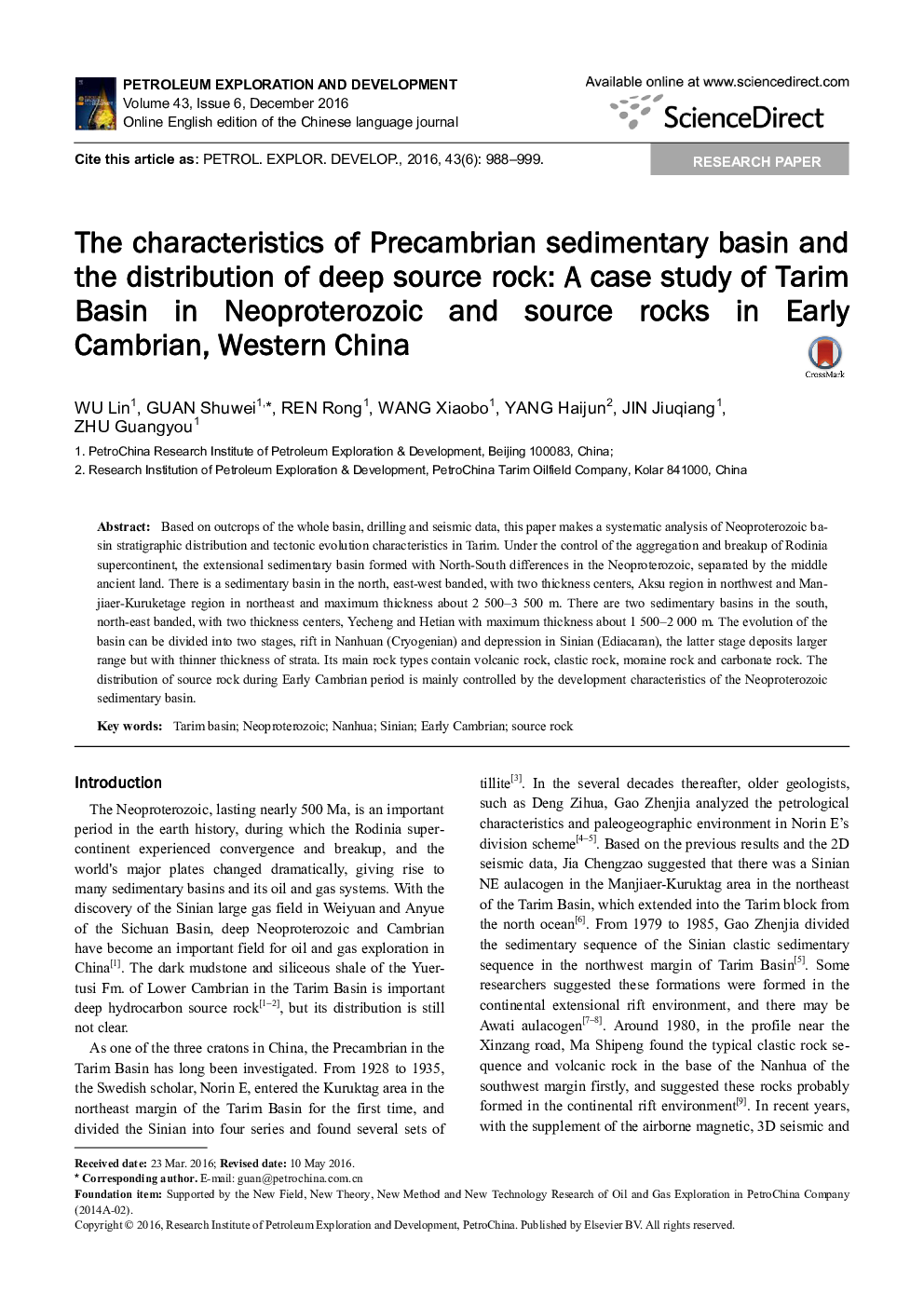| Article ID | Journal | Published Year | Pages | File Type |
|---|---|---|---|---|
| 8912311 | Petroleum Exploration and Development | 2016 | 12 Pages |
Abstract
Based on outcrops of the whole basin, drilling and seismic data, this paper makes a systematic analysis of Neoproterozoic basin stratigraphic distribution and tectonic evolution characteristics in Tarim. Under the control of the aggregation and breakup of Rodinia supercontinent, the extensional sedimentary basin formed with North-South differences in the Neoproterozoic, separated by the middle ancient land. There is a sedimentary basin in the north, east-west banded, with two thickness centers, Aksu region in northwest and Manjiaer-Kuruketage region in northeast and maximum thickness about 2 500â3 500 m. There are two sedimentary basins in the south, north-east banded, with two thickness centers, Yecheng and Hetian with maximum thickness about 1 500â2 000 m. The evolution of the basin can be divided into two stages, rift in Nanhuan (Cryogenian) and depression in Sinian (Ediacaran), the latter stage deposits larger range but with thinner thickness of strata. Its main rock types contain volcanic rock, clastic rock, moraine rock and carbonate rock. The distribution of source rock during Early Cambrian period is mainly controlled by the development characteristics of the Neoproterozoic sedimentary basin.
Related Topics
Physical Sciences and Engineering
Earth and Planetary Sciences
Geochemistry and Petrology
Authors
Lin WU, Shuwei GUAN, Rong REN, Xiaobo WANG, Haijun YANG, Jiuqiang JIN, Guangyou ZHU,
